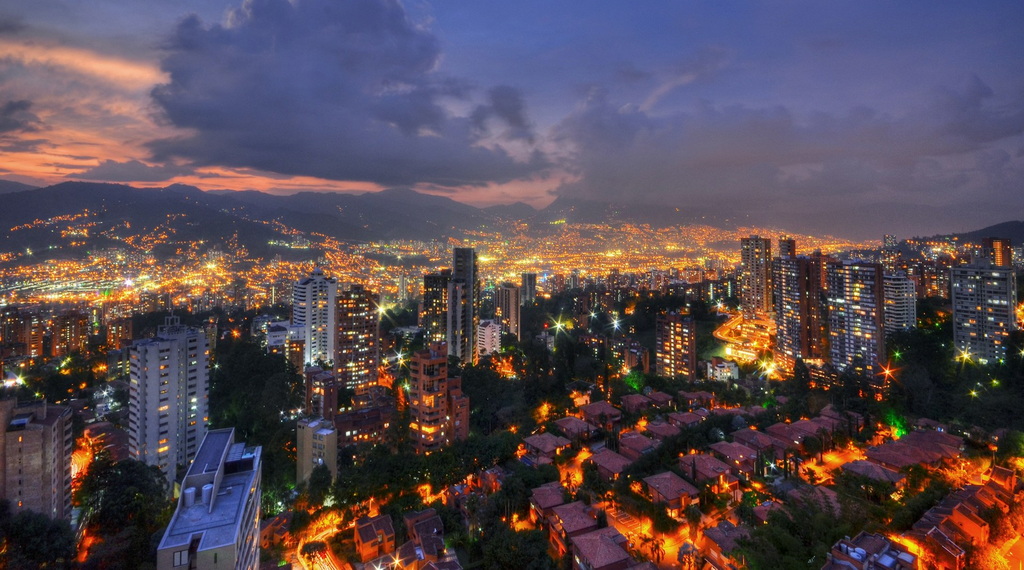Introduction
Medellín, once a name synonymous with fear and violence, is today cited as an example of urban and social transformation. How did a city that was once considered the most dangerous in the world reinvent itself to become a model of innovation and urban intelligence? This article explores the transformation of Medellín, using the concept of the ‘smart city’. It explores the initiatives that have improved the quality of life of its inhabitants.
Medellín’s journey from its dark past to its bright present illustrates what visionary governance and well-oriented public policies can achieve. The city has harnessed the power of technology and a human-centered approach to orchestrate its renewal, laying the foundations for an even more promising future.
The Context of ‘Smart Cities’
Definition and stakes
A ‘smart city’ uses information and communication technologies to improve the quality of urban services and reduce their costs. It is characterized by optimized resource management, better interaction with citizens, and decision-making based on accurate data. The stakes are multiple: sustainable development, mobility, security, and social well-being.
The rise of ‘smart cities’ is a response to the challenges posed by growing urbanization and the need to make cities more livable. This implies a profound transformation that affects mobility, housing, energy, education, and health, while promoting inclusion and citizen participation.
The Development of ‘Smart Cities’ in Latin America
Latin America, faced with major urban challenges, has gradually opened up to the concept of the ‘smart city’. Metropolises such as Santiago de Chile, Buenos Aires in Argentina, and Rio de Janeiro in Brazil have begun to integrate innovative solutions to improve the management of their services and infrastructures.
The region has seen various initiatives emerge, ranging from the modernization of public transport to the implementation of intelligent surveillance systems to improve security. The integration of these technologies is seen as a lever for economic development and reducing inequalities.
Medellín, a Model of Urban Transformation
History and urban context of Medellín
Medellín, the capital of the Antioquia region in Colombia, was long associated with the violence of drug cartels and an alarming homicide rate. In 1991, the city recorded a rate of 390 homicides per 100,000 people, ranking it among the most dangerous in the world. However, this dark period is now behind it, thanks to a series of bold measures and a clear vision for its future.
Medellín’s transformation has focused on innovation and social inclusion, with a proactive policy of urban development. Local authorities have implemented ambitious projects aimed at reducing poverty and improving access to essential services, while strengthening security and social cohesion.
Medellín’s initiatives as a ‘smart city’
Medellín has been recognized for its avant-garde initiatives by becoming, in 2012, the ‘most innovative city in the world’ according to the Wall Street Journal. This distinction highlights the success of projects such as outdoor escalators in slums, park libraries, and metrocables connecting disadvantaged neighborhoods to the rest of the city.
The integrated transport system, the creation of innovation clusters, and the digitization of public services are also among the measures that have propelled Medellín onto the international ‘smart city’ scene. These initiatives have not only improved urban mobility but also fostered entrepreneurship and vocational training.
Impact on the quality of life of the inhabitants
The impact of Medellín’s transformation on the quality of life of its inhabitants is undeniable. The homicide rate has been reduced by 95%, while the population living in extreme poverty has fallen from 8% to 3%. These figures show a significant improvement in security and living conditions.
In addition, the extreme poverty line, defined as a monthly income of less than 33.80 euros, insufficient for basic food needs, has been a major concern of public policy. The result is a city where social innovation goes hand in hand with a reduction in inequalities and better integration of marginalized neighborhoods.
Challenges and prospects for Medellín and other Colombian cities
The challenges facing a ‘smart city’
Despite its successes, Medellín faces many challenges to maintain its status as a ‘smart city’. Sustainable management of urban growth, adaptation to climate change, and consolidation of social progress are crucial issues for the future.
The city must also ensure that innovation benefits all its inhabitants and does not create new forms of exclusion. Active community participation and transparent governance are essential for urban technologies and policies to truly meet the needs of citizens.
Future prospects for Medellín and Colombia
Medellín is now a model for other cities in Colombia and Latin America. Its experience shows that it is possible to reverse negative trends and embark on the path of innovation and inclusive development. The city continues to invest in education, health, and infrastructure to ensure a prosperous future for its citizens.
The future prospects for Medellín and Colombia are linked to the country’s ability to build on the city’s successes and replicate its best practices. This implies collaboration between different cities and a strong political will at the national level to continue on the path of equitable and sustainable growth.
Conclusion
Medellín has proven to the world that a city marked by a past of violence and despair can reinvent itself and become an example of urban innovation. The initiatives implemented have had a profound impact on society, creating a safer and more inclusive environment for its inhabitants.
This journey inspires and gives hope to other metropolises facing similar challenges. If Medellín has been able to achieve such a transformation, other cities can follow the same path, adapting the lessons learned to their own context and resolutely committing to the future.






